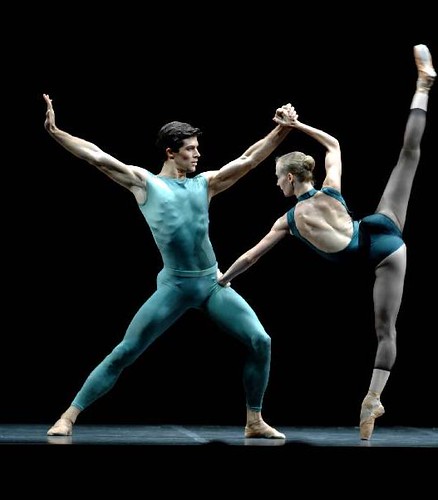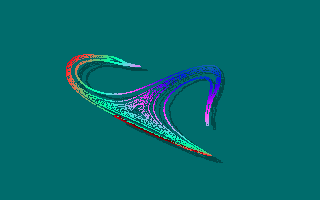| Following the ideas of Rudolf Laban, Forsythe generates much of his movement based upon a crystalline geometry of the body and uses this structure to generate points and planes in the body which can initiate polycentric movement. In addition to this, he contributed to postmodern ballet with his incorporation of an anti-structural, disjointed deconstruction of movements along with his use of putting a greater emphasis on image and overall intent rather than a structured storyline. In his works, Forsythe also blurred the gender roles of the dancers, and much of the pas work put an equal importance on both dancers to execute the movements. Similar to Balanchine's works, the partnering is utilized to achieve movements otherwise unattainable, using the strengths of both of the dancers. |  |
 | Forsythe was a very analytical man. He noted the importance of math, physics, and philosophy in dance. He created many movements by observing the physics of them and then used a "mathematical prescription" to define them. He also has utilized formulas and theories from physics and combined them with the geometrical shapes he wished to set in the body. Included in these were geometrical fractals, or the image of way things fold and unfold, feeding into each other and themselves, along with tessellations. |
In 1994, Forsythe created a computer application called Improvisation Technologies: A Tool for the Analytical Dance Eye. This program assists with creating new movements in improvisation and has been used by professional companies, dance conservatories, universities, and even postgraduate architecture programs. This is fitting due to the large influence postmodern architecture has had on the forms created in Forsythe's works. It is almost ironic how the great amount of careful detail and structure went into freeing the form of ballet.
I am so impressed by William Forsythe's use of mathmatics in his creation of choreography. Usually people associate arts and sciences as polar opposites, just as they classify ballet and modern as polar opposites... however, Forsythe breaks the dividing wall down in both instances, and I think that's what makes his work even more fantastic to watch.
ReplyDeleteLovely support of his ideas with the mathematical links.
ReplyDeleteBefore I read this blog I couldn't have told you anything about Forsythe, but I feel like I have an extremely in-depth bank of information about him now, thanks to you! I am absolutely intrigued by the combination of art and science, specifically dance and mathematics/physics. The interview on the ballet.co.uk page that you linked to is fascinating, and extremely inspiring. I also loved watching the videos - Forsythe's use of planes, poly-centricism, points of movement initiation, and classic technique, with obvious references to architecture and science (while still clearly remaining an art) inspired me so much.
ReplyDelete